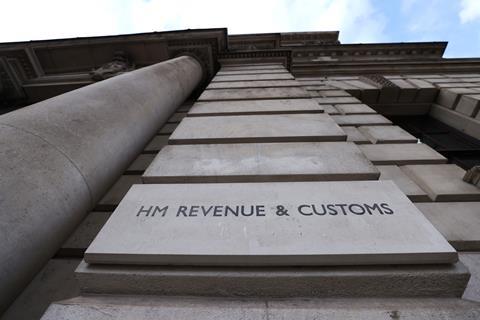HM Revenue & Customs has changed its published guidance on the interpretation of legislation concerning the self-employment status of fixed share members in law firms, legislation known as the salaried member rules.
This is an important and notable change for law firms who have fixed share member arrangements in place.
Firstly, as an overview, law firms who have fixed share members now need to consider the following:
a) If the law firm has capital contribution arrangements which are fixed at 25% of the fixed share member’s disguised salary, which then vary over time as their disguised salary changes, this is unlikely to be effective in the future securing self-employment status for those members.
b) The change in guidance itself signals a potential intention for HMRC to become more aggressive towards the subject of law firms maintaining self-employment status for fixed share members. This is a sharp change in policy because experience suggests that HMRC has shown limited interest in this area since the legislation was introduced.
c) Law firms may benefit from paying closer attention to the definition and calculation of disguised salary under the legislation and the timing of capital contributions made by fixed share members. Both are areas where law firms are often not precisely complying with the requirements of the legislation.
d) Law firms placing reliance on the 'significant influence' argument may wish to reconsider the details of the recent tax case in this area (HMRC v BlueCrest Capital Management(UK) LLP [2023]) (the BlueCrest case) and re-evaluate their own arguments to support whether their fixed share members have significant influence in their law firm. Indeed, the BlueCrest case may encourage law firms to focus more on significant influence than capital contributions in their arrangements in the future.

1. Existing Rules
The existing salaried member rules set out that members of an LLP are treated as employees for tax purposes if all three of the following conditions are met:
a) it is reasonable to expect that at least 80% of the individual's total remuneration is 'disguised salary' (broadly profit allocations that are fixed or do not vary in line with profit or losses of the LLP) (condition A).
b) the individual does not have significant influence over the affairs of the LLP (condition B); and
c) the individual's capital contribution is less than 25% of the disguised salary that it is reasonable to expect will be payable to them in the relevant tax year (condition C).
So, as long as at least one of these conditions are not met the member is deemed self-employed.
Importantly there is a targeted anti-avoidance rule (TAAR) that requires, when applying these rules, that HMRC can disregard arrangements which have a main purpose of tax avoidance (i.e. arrangement with the main purpose of ensuring the salaried member rules do not apply).
2. What has changed?
HMRC has amended its published guidance in relation to capital contributions by adding a new example and removing an existing example.
The example added to the Partnership Manual (259200) is that TAAR would be considered to apply where a member changes their capital funding contributions to avoid condition C being met.
So, whilst an initial contribution of capital at 25% of their disguised remuneration might be acceptable to avoid condition C being met, future changes to keep the capital at 25% of a moving disguised salary would result in TAAR being triggered and condition C would still be met.
For example, a new incoming fixed share member with disguised remuneration (fixed share) of £100,000 could legitimately introduce capital of £25,000 and avoid meeting condition C. However, if in future periods their fixed share rose to say £150,000 and they then increased their capital contribution to 25% of this figure (i.e. £37,500) then this could trigger TAAR.
The example which has been removed from the Partnership Manual (259310) previously included guidance that indicated that a genuine capital contribution intended to be enduring and giving rise to real risk for the member would not result in the TAAR being applied.
It is notable that this example included detailed comments about the funding of the capital for the member, specifically mentioning the common approach of the law firm arranging the loan, giving undertakings regarding the repayment of capital to the member and practically organising the payment of interest (including sometimes increasing the members profit share to account for the interest).
The removal of this example from the guidance notes potentially indicates that HMRC may see such arrangements (for example provisions such as increasing profit shares to cover interest on such capital loans) as detracting from the ethos of self-employment for these members and potentially an area they might seek to challenge in the future.
3. Observations and interpretation
Law firms affected by this change in guidance are likely to be those who have arrangements where fixed share members change their capital contributions to maintain a position of not meeting condition C. The direction of travel from HMRC also perhaps suggests more generally that there could be more challenge in the future surrounding actions firms take in their arrangements to not meet conditions A, B and C.
At this point we should keep in mind that HMRC’s previous statements will remain relevant to any challenges concerning arrangements put in place before the recent change in their guidance.
In the past, HMRC has taken the view that if the law firm organises their fixed share member arrangements so that one or more of the conditions are failed, and those arrangements are of an enduring nature with genuine 'risk' consequences for the fixed share member, then they should not trigger TAAR. In fact, HMRC guidance still states it will not consider that a genuine and long-term restructuring that causes an individual to fail one or more of the conditions is contrary to the policy aim of the legislation.
In the background however it is important to consider that there is the case of HMRC v BlueCrest Capital Management (UK) LLP [2023] (the BlueCrest case). The taxpayer here has successfully argued in the case of condition B that 'influence' was distinct from managerial control and that significant influence need not be exerted over the whole of the LLP’s affairs for a particular fixed share member to fail the condition.
It is possible that this position on the BlueCrest case has led to HMRC revising its thoughts on condition C as an alternative route for tackling what it sees as abusive arrangements under the salaried member rules.
It also perhaps indicates that HMRC may now take a wider view of what may trigger TAAR under the salaried member rules and there may be more of a focus from HMRC on the intention surrounding the capital structure rather than the commercial consequences (e.g. risk) which the fixed share member becomes exposed to.
It also may be the case that HMRC now believes (due to the BlueCrest case) that it will more commonly have to rely on condition C not being met because of the potential difficulty in its challenge of condition B being met in that case.
A particular observation to make here is that those LLPs seeking to rely on condition C not being met may now look to consider whether they can rely instead on Condition B or at least strengthen their arrangements in place (and documentation) to make a claim for not meeting condition B being a potential route for them if their position on condition C is ever challenged.
4. Practical considerations for law firms
a) Firms applying incremental movements in capital
Many law firms have a simple mechanism whereby the capital of fixed share members is fixed at 25% of their fixed share and then this moves in the future as their fixed share changes. Those firms now need to review this model considering the example from HMRC which states that this would trigger TAAR.
From the stance taken by HMRC law firms need to break the link between changing fixed profit shares and the level of capital the fixed share member has in the business. This is potentially tricky to achieve without some considerable change in law firms.
Even where firms operate bandings for capital contributions, this might present a risk (for example, where a law firm requires £50,000 of capital from all fixed share members with fixed shares up to £100,000 and £75,000 of capital from all fixed share up to £200,000).
Whilst in this example the capital contributions are not varied to be exactly 25% of the disguised salary for those members, in the spirit of the new HMRC example, the contribution is still moving in conjunction with their disguised salary, and one could anticipate HMRC drawing comparisons. Firms in such situations might mitigate these risks by having a background capital funding calculation which supports the contribution of capital funding to the business and linking this to the level of profit share rights (including fixed shares).
An approach which seems more likely to be acceptable is where fixed share members all simply contribution the same capital level irrespective of their personal profit share arrangements. This of course would remove the need for their capital contribution to change as their disguised remuneration changes; equally of course this means that those with lower fixed profit shares suffer a higher burden of funding the law firm.
The primary point however is that HMRC’s thought is evolving in this area and firms will need to be careful in these structures to ensure there is a clear business case for the level of capital contribution and demonstrate it is not simply in place to avoid meeting condition C and triggering TAAR.
b) Care on 'disguised salary' and the timing of capital contribution by fixed share members
The fact HMRC is making these changes implies that the salaried member rules may be in its sights for more attention moving forwards. Law firms would therefore be well advised to consider wider aspects of the rules. Given the level of ambiguity in elements of the legislation this could provide a range of challenges.
One aspect which can be overlooked by firms is the precise definition of disguised salary. The legislation refers to disguised salary as being the amount 'which, at the relevant time, it is reasonable to expect will be payable by the limited liability partnership in respect of M’s performance during the relevant tax year of services for the partnership in M’s capacity as a member of the partnership'.
Reasonable in this context could therefore be expected to include bonuses which the member receives (or can expect to receive) by virtue of their personal performance or the performance of a subset of the law firm rather than from the profits of the firm in aggregate.
For example: if a fixed share member receives a fixed share of £100,000 plus a 1% share of the remaining variable profits of the LLP, then their disguised salary is £100,000. However, if they receive a fixed share of £100,000 plus a bonus based on their personal performance, or the performance of their team, or their office, then the disguised salary is the £100,000 plus the reasonable expectation of the bonus.
So, if a member has regularly received bonuses (not wholly because of the total profits of the firm but in part due to 'personal performance') this cannot be ignored in the assessment of disguised salary for the purposes of calculating their 25% capital requirement to avoid meeting condition C.
Law firms can often overlook this point which runs the risk of the capital contribution of fixed share member being less than 25% of their disguised salary.
It is important to also note that the legislation refers to the determination of whether condition C is met as taking place at the start of the tax year for a continuing member. The capital from the member needs to be in place at the start of the relevant period i.e. from when they start to earn their disguised salary.
The legislation surrounding this area is complicated and firms need to ensure that fixed share members contribute their capital at the appropriate time. Incoming partner capital loans for example will need to be received on time and if there is any funding by transfer from a member’s current account of the LLP this should be recorded in the nominal ledger at the correct time and not simply transferred when the subsequent year end financial accounts are prepared. Careful drafting of the member’s agreement may well be a consideration for some firms in this area.
c) Firms relying on 'significant influence' (not meeting condition B)
Many law firms, particularly smaller firms (typically sub £10million turnover) will often rely on not meeting condition B. The new guidance example from HMRC suggests their view is that where there is a distinct management and governance group of the LLP that members outside this group are unlikely to exert significant influence.
This is naturally a vague and subjective area and that was the contentious element of the BlueCrest case. In fact, in contrast to the example in the HMRC guidance, the BlueCrest case appears to strengthen the argument for firms placing reliance on failing condition B. However, firms relying on this measure would be advised to keep track of changing HMRC views and case law emerging in this area to ensure they remain confident they can defend the 'significant influence' claim.
Firms may also want to consider practical aspects here, such as documenting members involvement in the decision making in the business (or part of the business) and revisiting their members’ agreement to ensure this really reflects fixed share members having such influence and involvement in the day to day running of the LLP. Aspects such as documenting the roles of fixed share members and setting out where they are making decisions within the LLP on a day-to-day basis as well as for the LLP could be constructive in case of the event of future challenge from HMRC.
The salaried member legislation is a detailed subject but hopefully the above explains some of the issues arising from the recent change in HMRC guidance for law firms. There is likely to be work for some law firms to do in this area in terms of changing their capital contribution arrangements for fixed share members, their members’ agreement and potentially the way the law firm is run day to day.
The most important point to note here is that the salaried member legislation now is of interest to HMRC; up until now it has not given it great attention.
Ironically of course the recent reduction to National Insurance narrows the taxation savings for firms having individuals as self-employed members compared with them being employees. This change of direction by HMRC may also encourage law firms to move away from fixed share member arrangements entirely?
Andrew Allen is partner and head of legal at PKF Francis Clark and vice chair of the Law Society Leadership and Management Section































No comments yet